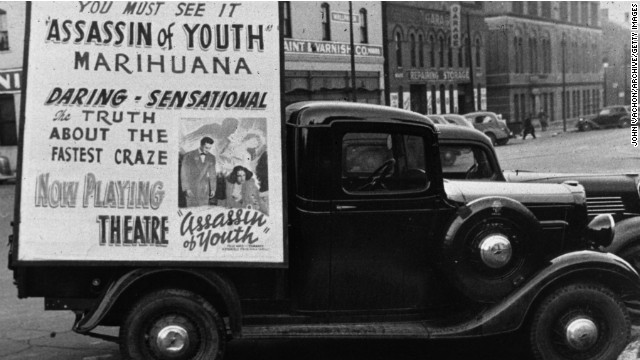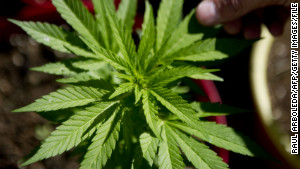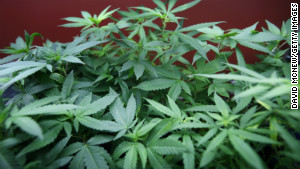Youth Crime Down In California After Ganja Is Decriminalised
Published: Sunday | December 2, 2012
Between 2010 and 2011, the American state of California experienced a drastic 20 per cent decrease in juvenile crime — bringing the underage crime rate to the lowest level since the state started keeping records in 1954.
And a recently released study credits much of that improvement to the decriminalisation of marijuana.
According to a recent report in the Huffington Post San Francisco, the study, titled 'California Youth Crime Plunges to All-Time Low' was released by the San Francisco-based Centre on Juvenile and Criminal Justice.
It looked at the number of people under the age of 18 who were arrested in the state over the past eight decades.
The research not only found juvenile crime to be at its lowest level ever but, in the wake of then-Governor Arnold Schwarzenegger signing a bill reducing the punishment for possessing a small amount of marijuana from a misdemeanour to simply an infraction, the drop in rates was particularity significant.
interesting declines
In that one-year period, the number of arrests for violent crimes dropped by 16 per cent, homicide went down by 26 per cent and drug arrests decreased by nearly 50 per cent.
The category of drug arrests showed decreases in every type of crime; however, the vast majority of the drop resulted from far fewer arrests for marijuana possession.
In 2010, marijuana possession accounted for 64 per cent of all drug arrests, and in 2011, that number decreased to only 46 per cent.
California's drop in serious youth crime has decreased faster than in the rest of the nation.
The study's authors discount a host of explanations as to why juvenile crime has dropped so precipitously (such as changes in the way the statistics are gathered, demographic changes, harsher sentences acting as a deterrent and other cultural factors like family connections).
They assert that only two major factors explain the trend: the loosening of marijuana laws and improvements in the economic well-being of California's youth.
California's 2010 law did not legalise marijuana, but it officially knocked down "simple" possession of less than one ounce to an infraction from a misdemeanour - and it applies to minors, not just people over 21.
Police don't arrest people for infractions; usually, they ticket them.
And infractions are punishable not by jail time, but by fines - a US$100 fine in California in the case of less than one ounce of pot.
"I think it was pretty courageous not to put an age limit on it," said Males, a long-time researcher on juvenile justice and a former sociology professor at the University of California at Santa Cruz.
Arresting and putting low-level juvenile offenders into the criminal-justice system pulls many kids deeper into trouble rather than turning them around, Males said, a conclusion many law-enforcement experts share.
This report was first published in the Huffington Post San Francisco.
Published: Sunday | December 2, 2012
Between 2010 and 2011, the American state of California experienced a drastic 20 per cent decrease in juvenile crime — bringing the underage crime rate to the lowest level since the state started keeping records in 1954.
And a recently released study credits much of that improvement to the decriminalisation of marijuana.
According to a recent report in the Huffington Post San Francisco, the study, titled 'California Youth Crime Plunges to All-Time Low' was released by the San Francisco-based Centre on Juvenile and Criminal Justice.
It looked at the number of people under the age of 18 who were arrested in the state over the past eight decades.
The research not only found juvenile crime to be at its lowest level ever but, in the wake of then-Governor Arnold Schwarzenegger signing a bill reducing the punishment for possessing a small amount of marijuana from a misdemeanour to simply an infraction, the drop in rates was particularity significant.
interesting declines
In that one-year period, the number of arrests for violent crimes dropped by 16 per cent, homicide went down by 26 per cent and drug arrests decreased by nearly 50 per cent.
The category of drug arrests showed decreases in every type of crime; however, the vast majority of the drop resulted from far fewer arrests for marijuana possession.
In 2010, marijuana possession accounted for 64 per cent of all drug arrests, and in 2011, that number decreased to only 46 per cent.
California's drop in serious youth crime has decreased faster than in the rest of the nation.
The study's authors discount a host of explanations as to why juvenile crime has dropped so precipitously (such as changes in the way the statistics are gathered, demographic changes, harsher sentences acting as a deterrent and other cultural factors like family connections).
They assert that only two major factors explain the trend: the loosening of marijuana laws and improvements in the economic well-being of California's youth.
California's 2010 law did not legalise marijuana, but it officially knocked down "simple" possession of less than one ounce to an infraction from a misdemeanour - and it applies to minors, not just people over 21.
Police don't arrest people for infractions; usually, they ticket them.
And infractions are punishable not by jail time, but by fines - a US$100 fine in California in the case of less than one ounce of pot.
"I think it was pretty courageous not to put an age limit on it," said Males, a long-time researcher on juvenile justice and a former sociology professor at the University of California at Santa Cruz.
Arresting and putting low-level juvenile offenders into the criminal-justice system pulls many kids deeper into trouble rather than turning them around, Males said, a conclusion many law-enforcement experts share.
This report was first published in the Huffington Post San Francisco.







Comment